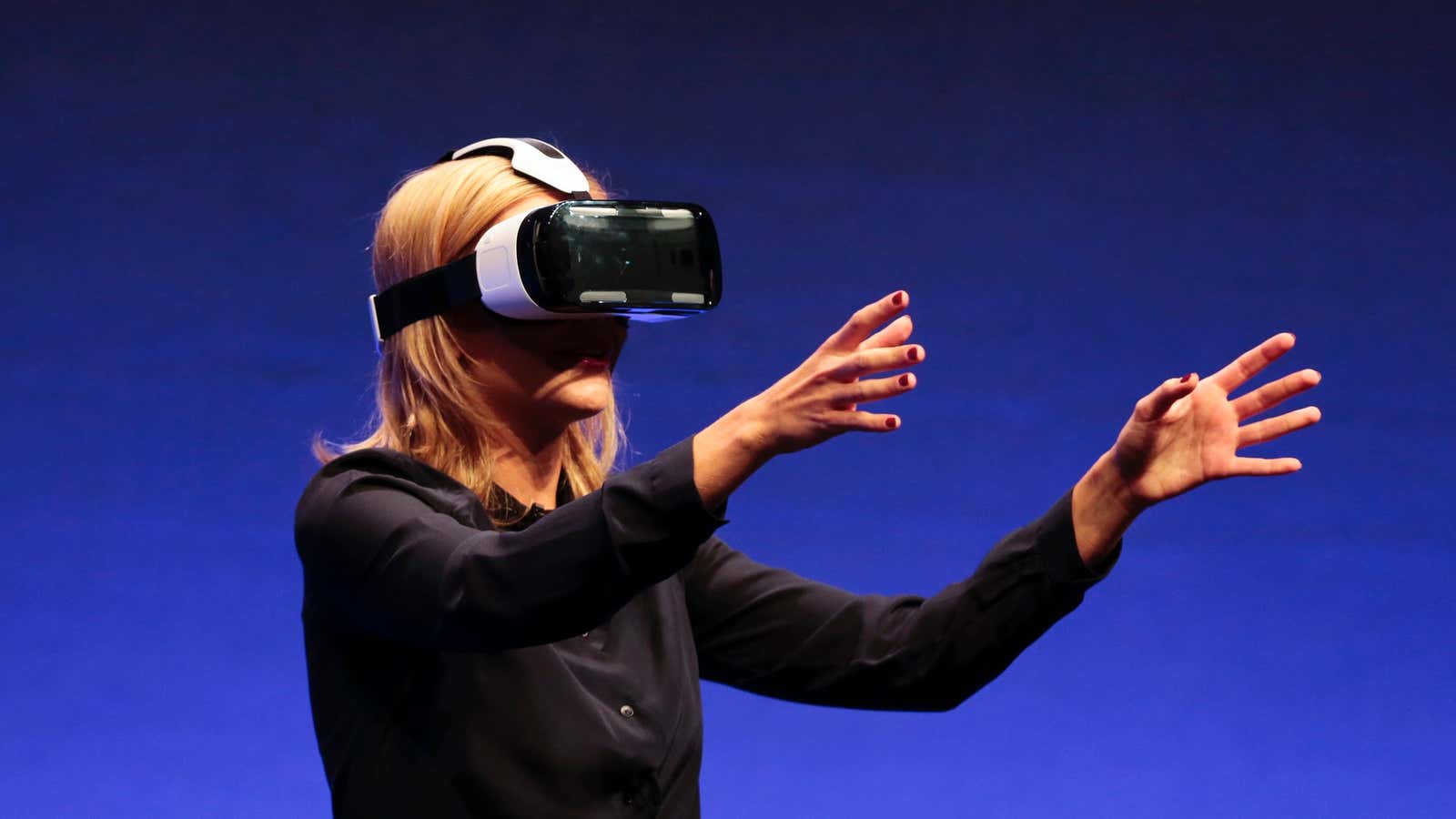Watch this on a smartphone in the YouTube app, then come back here.
To promote its new soccer cleats, Nike has made a virtual reality video of Brazilian soccer phenom Neymar scoring a goal for the national team (something he won’t actually be doing any time soon). Move the video around, and you’ll see Couthino backing up on a defender, and you can follow the arc that a soccer ball travels as Neymar rainbows around the opposition.
In the end, Neymar scores a pretty tame goal—especially by his standards—but you can watch tens of thousands of adoring virtual fans cheer the goal, as if you had been starting for Brazil. This promotional video hints at something potentially bigger than scoring for the Canarinho: The future of virtual reality—at least the near future of it—might be sitting in our pockets.
As Quartz has reported before, companies like Google and GoPro have been laying the foundation for these types of videos to enter the mainstream. Google announced at its developer conference in May that anyone shooting 360-degree video can upload it directly to YouTube, using its stitching system, Jump. The company also announced that its $20 Google Cardboard headset now works with almost any smartphone. Although far more affordable than its Facebook- and Microsoft-owned competitor headsets likely will be, Cardboard still requires that you cover your face with an awkward, bulky box to enjoy its videos. There may come a point where we don’t find this weird, but for now, it certainly still is.
Nike’s video shows us there might be another way with VR. It might not be as immersive as the Oculus Rift experience, but it’s still pretty fun to play with. The idea isn’t new—some of the earliest games for the iPhone, all way back in 2008, made use of the phone’s built-in accelerometers to open up worlds beyond the four-inch screen as the user moved the phone around—but easy access to 360-degree video could change the sort of content we seek out on mobile.
There soon could be a time—especially as the price of cameras like GoPro’s Freedom 360 drop—when we’re capturing immersive videos instead of static ones at the events that matter to us. Instead of seeing the rectangular video from halfway back at a concert, we could see everything the crowd sees, from every angle.
We could capture first dances at weddings that let family members who couldn’t make it feel like they’re on the dance floor. We could feel like we were flying over the scene if we brought a drone into the equation (something which both GoPro and DJI are working on). All these experiences will live in the YouTube app on your smartphone, available wherever you are, not wherever it’s socially acceptable to don a headset.
At the very least, when more people—not just brands’ marketing departments and media companies—start capturing these sorts of moments in VR, future commutes to work will be a lot less dull.
